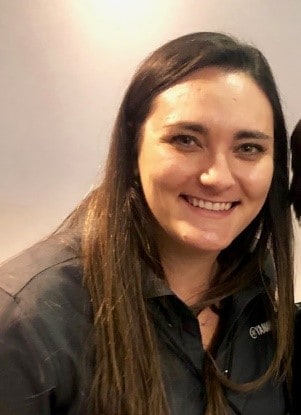Break Through Value Based Payments
Looking at States' Managed Care Programs: Kansas and Texas
THE VBP Blog
Happy New Year!
Let’s start 2020 where we left off in our last blog. We will review two of the ten states that currently are supporting the I/DD population with managed care programs. Using the Ancor 2018 White Paper, combined with our own research, we opted to break down Texas and Kansas. Both contract with Multi-state Commercial MCOs to administer their programs.

Kansas’ fully capitated, MCO-based, state-wide program is called KanCare, started in 2013 with the I/DD enrollment portion starting in 2014. As of the end of 2017 there were 8954 people on the KanCare I/DD Waiver program. The initial goals for KanCare were similar to Iowa’s: improve quality of care, control costs, provide integration and coordination of care, and establish long-lasting reforms to sustain health improvements. The I/DD goals also added increasing access for this population while eliminating wait times and improving employment outcomes. These big goals also had a significant focus on cost savings. According to then-governor Brownback, the program promised to save the state $1 billion in Medicaid costs over five years. The I/DD population also didn’t make the move to MCOs right away, making it a slower transition with the local Community Developmental Disabilities Organizations and targeted care managers who would then work with the MCOs.
The big question: does it work? Is quality higher and are costs reduced? While there have been some successes, it has been underperforming for the I/DD community. The Leavitt Brothers put out a report stating results as of 2018. On the positive side: cost savings of an estimated $1.7 billion, per capita expenditures fell from $625/ month in 2013 to $563/month in 2016, hospital inpatient services decreased 28%, and a shift toward HCBS (home and community based) services over hospital services. Among the negatives: the I/DD goals are farther from being achieved with waiting times actually increasing and statewide employment improvements trending at 14% versus the 18% national average. It has also been a challenge to get correct data with auditor reports saying the state data is far off the truth and cannot be relied on. According to an article on governing.com, “the state’s data is so bad, there’s no way to know [whether KanCare is working].”
Texas established the STAR program in 1993, a Medicaid managed care program that contracts with MCOs to provide, arrange, and coordinate preventative, primary, and acute care mainly for pregnant women and parents with limited incomes. That initial program has expanded into the STAR+PLUS program that includes a wide range of services including an HCBS program that is designed to allow individuals who qualify for nursing facility care to receive LTSS to be able to live in the community. In 2014, management and coordination of acute care services for persons with I/DD were transitioned to the STAR+PLUS managed care program. In 2015, an average of 39,042 individuals were actively enrolled in an I/DD waiver or community based ICF-IDD each month. By 2021, there are many programs that will be launched including the Texas Home Living (TxHml) waiver, Home and Community-based services (HCS) for the ICF/IDD community, the Community Living Assistance and Support Services (CLASS), and Deaf Blind with Multiple Disabilities (DPMD). In 2017, the Texas Health and Human Services Commission was set to conduct a pilot demonstration for the delivery of I/DD HCBS services through managed care. Unfortunately, that program has been cancelled due to concerns about certain parts of the pilot and time constraints. The main feature of the STAR+PLUS program is service coordination that is staffed by the MCOs. These specialized service coordinators are available to program members who need or request it and are subject matter experts or have access to such expertise when working with the I/DD and LTSS members.
New procurement proposals were sent in March 2018 in response to new procurement initiatives for all the STAR Medicaid programs. Specifically to I/DD, MCOs were asked to provide plans and policies that demonstrate their expertise in managing this population and how they will promote quality of life and community inclusion goals. In October 2019, those contracts for the STAR+PLUS MLTSS program were awarded for an initial term of 3 years with programs starting in September 2020. It is still too early to determine whether the changes made by the MCOs are truly being implemented; the prior experience with the I/DD population is relevant, but we have seen that each state is unique, and therefore, we should take such prior experience with a grain of salt.
The state’s goals for managed care are to improve outcomes, offer flexibility to providers and recipients, reduce waiting times, and reduce costs. The I/DD providers have cited potential challenges mainly due to underinvestment in the systems, failure to address administrative barriers, and inflexibility in design to allow for unanticipated challenges. In addition, the Chair of Texas Human Services mentioned needing to ‘pause’ before any further services or populations can be addressed in managed care. While they have been in managed care since the 90’s and have lofty goals for working with the I/DD community, there seem to be more questions than answers on how they will handle the costs and systems this group needs, as well as the unpredictability inherent to working within it.
Both Texas and Kansas have successes and uncertainties in their current managed care programs. Kansas is working with a much smaller population of people in their KanCare program and has reported some cost reductions, although the verdict is still out on whether care is improving, or if their data is even reliable. Texas has managed care programs that provide incredible service coordination under the current STAR+PLUS program but still has some work to do to improve quality and reduce overall costs.
Advocate’s perspective:
Cost reductions alone cannot be the reason why states should pursue managed care programs for the I/DD populations. The opportunities for continuous improvements are real, and the Texas experience is evidence that there is always a “next generation”. As an advocate I found the most glaring difference between Texas and Kansas to be the manner in which service coordination/case management was implemented. The specialized nature of the needs of the I/DD population makes such expertise imperative, as would be the personal relationship consumers maintain with their service coordinators. As plans look to make changes in their approach to the market, they need to keep in mind that “it is very personal.”
Onward!
Fady Sahhar and Mandy Sahhar

About the Author
Fady Sahhar brings over 30 years of senior management experience working with major multinational companies including Sara Lee, Mobil Oil, Tenneco Packaging, Pactiv, Progressive Insurance, Transitions Optical, PPG Industries and Essilor (France).
His corporate responsibilities included new product development, strategic planning, marketing management, and global sales. He has developed a number of global communications networks, launched products in over 45 countries, and managed a number of branded patented products.

About the Co-Author
Mandy Sahhar provides experience in digital marketing, event management, and business development. Her background has allowed her to get in on the ground floor of marketing efforts including website design, content marketing, and trade show planning. Through her modern approach, she focuses on bringing businesses into the new digital age of marketing through unique approaches and focused content creation. With a passion for communications, she can bring a fresh perspective to an ever-changing industry. Mandy has an MBA with a marketing concentration from Canisius College.